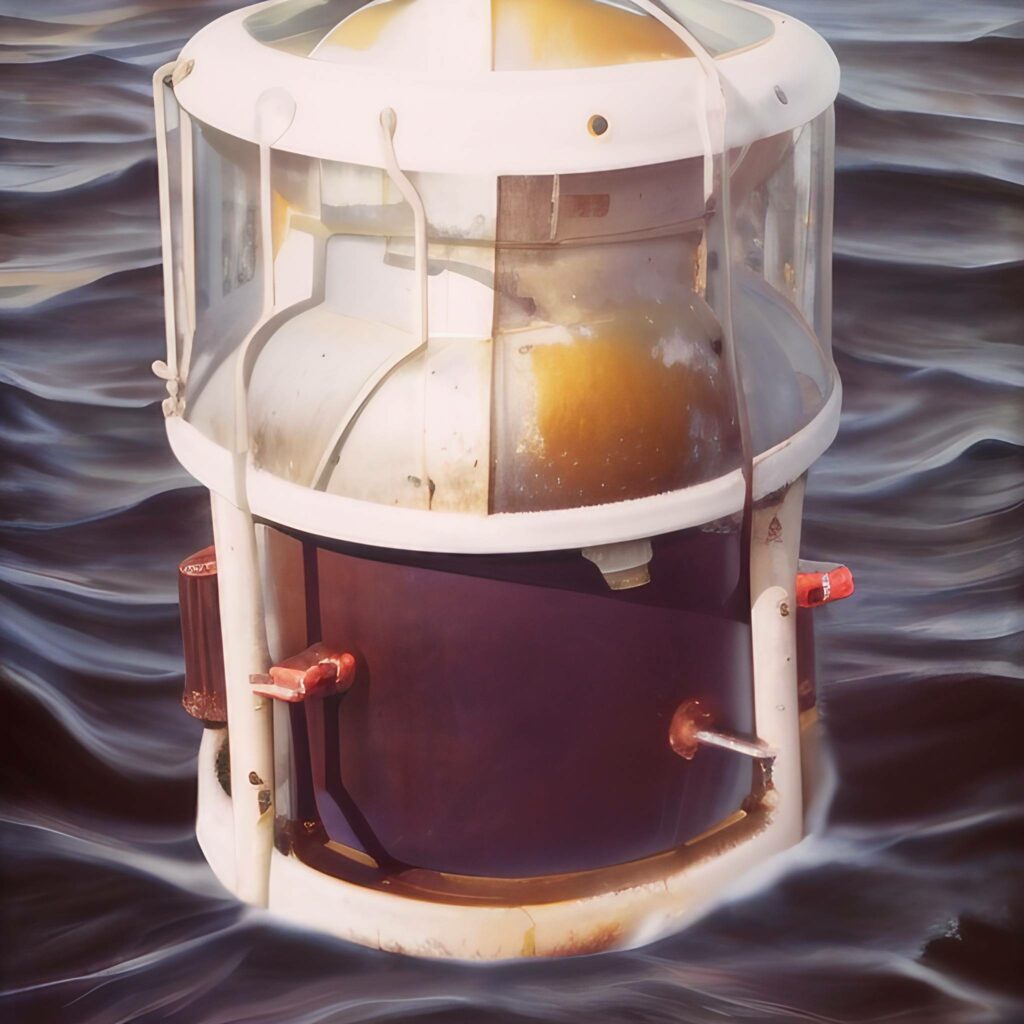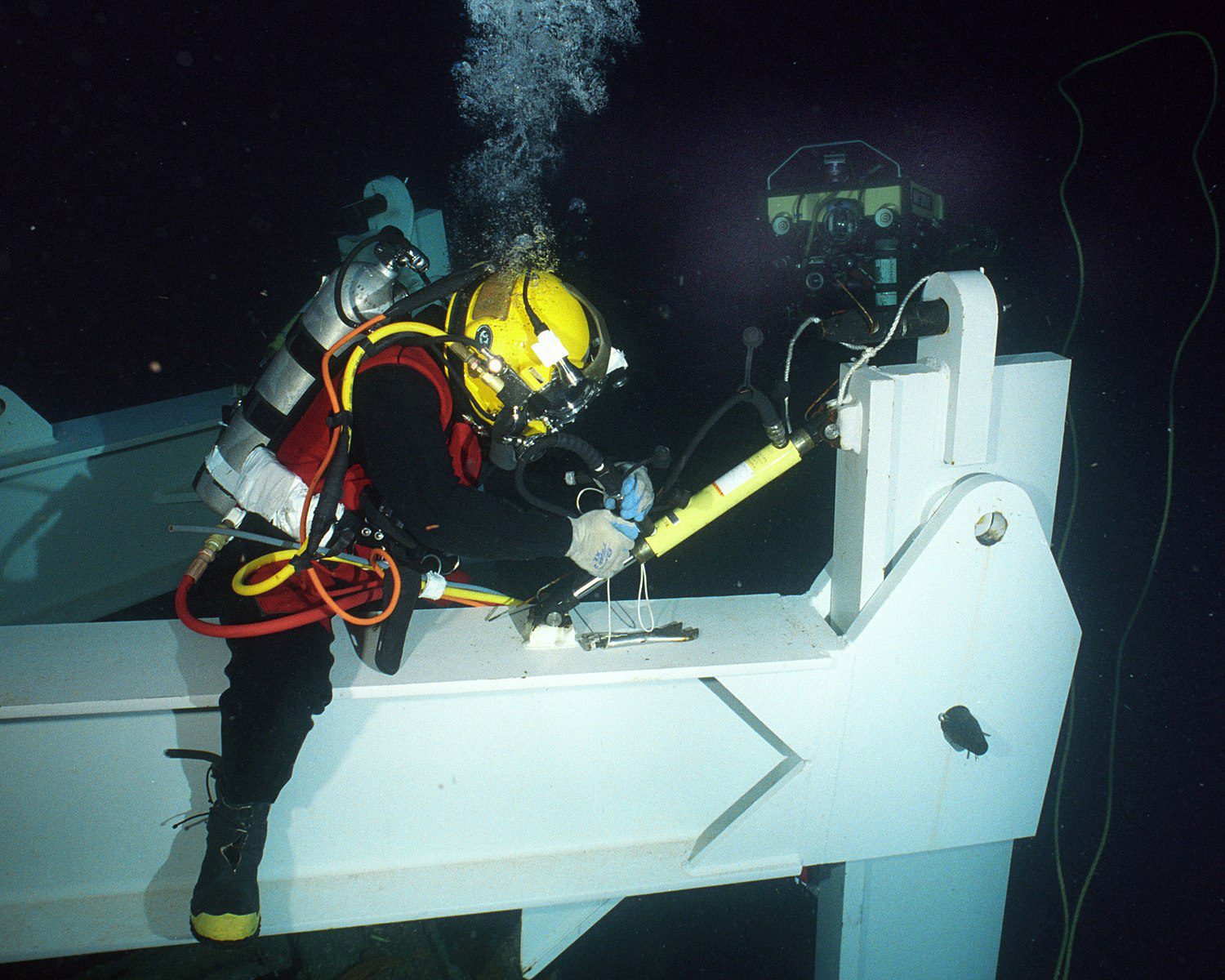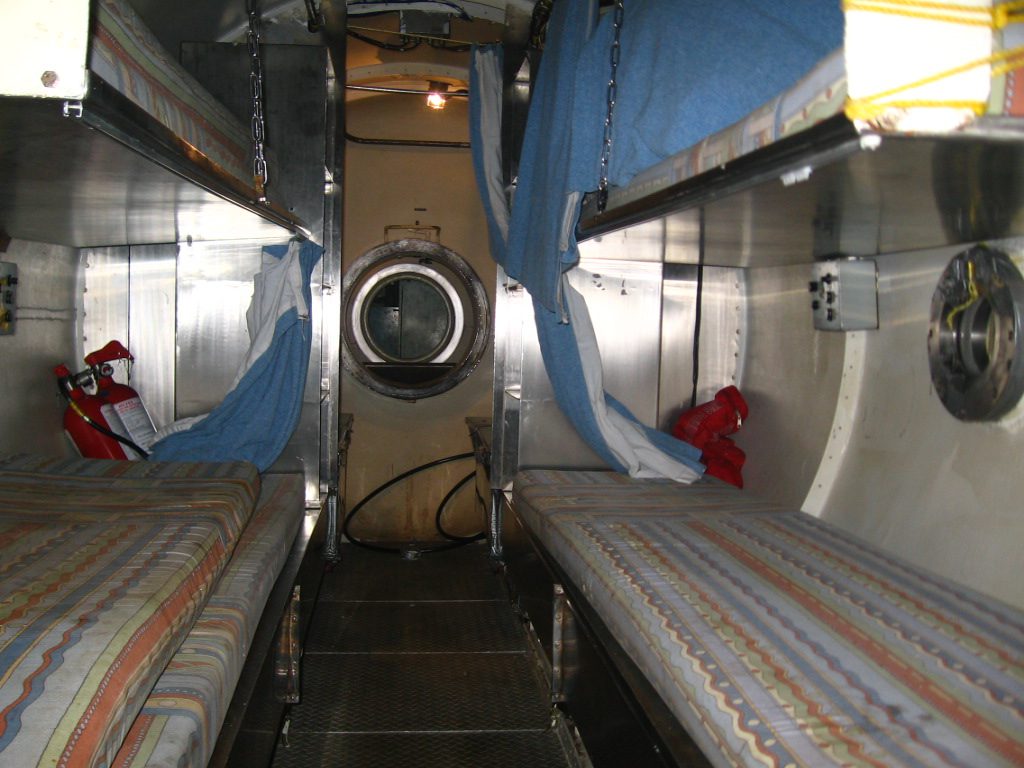The Byford Dolphin Tragedy: Unveiling The Horrific Autopsy Details
Table of Contents
- The Byford Dolphin: A Vessel of High Stakes
- The Fateful Day: November 5, 1983
- The Mechanics of Disaster: Explosive Decompression
- The Horrific Aftermath: Understanding the Byford Dolphin Body Autopsies
- Beyond the Immediate: The Fifth Victim and Lingering Trauma
- Lessons Learned: Transforming North Sea Diving Safety
- The North Sea Divers Alliance: A Legacy of Advocacy
- Remembering the Fallen: The Enduring Impact
The Byford Dolphin: A Vessel of High Stakes
The Byford Dolphin was not just any oil rig; it was a sophisticated piece of engineering designed to operate in one of the world's most challenging environments – the North Sea. This region is notorious for its harsh weather conditions, deep waters, and the immense pressures these depths exert. To extract oil and gas from such environments, specialized techniques like saturation diving are essential. Saturation diving allows divers to live in a pressurized environment for extended periods, reducing the need for lengthy decompression after each dive. This system typically involves a diving bell, which transports divers to and from the seabed, and a series of living chambers on the surface, where divers reside under pressure equivalent to their working depth. The inherent risks of saturation diving are immense. Human physiology is not designed for the extreme pressures found hundreds of feet below the surface. Divers must be meticulously compressed and decompressed over long periods to prevent decompression sickness, commonly known as "the bends." The entire system – from the diving bell to the living chambers and the locking mechanisms connecting them – must operate with absolute precision and fail-safe redundancy. The Byford Dolphin, like other rigs of its time, relied on these complex systems, and the lives of its saturation divers depended entirely on their flawless operation. The high stakes involved in these operations meant that any failure, no matter how small, could have catastrophic consequences.The Fateful Day: November 5, 1983
The morning of November 5, 1983, started like any other day for the crew of the Byford Dolphin. Four saturation divers – Edwin Arthur Coward, Roy Lucas, Bjørn Giæver, and Truls Hellevik – were in the decompression chamber system, having just completed a dive. They were in the process of transferring from one chamber to another, a routine procedure that involved complex pressure equalization and sealing protocols. The air pressure inside their living chambers was maintained at 9 atmospheres, equivalent to the pressure experienced hundreds of feet below the water, their working depth. The incident occurred during the transfer of the diving bell, which had just returned from a dive, to the living chambers. The bell was to be connected to the chamber system, and once sealed, the pressure between the two would be equalized before the divers could move between them. However, a critical error occurred. As the diving bell was being hauled up from beneath the ocean and attached to the saturation chambers, the rapid decompression occurred when a diving bell prematurely detached from its chamber due to unsealed chamber doors. This seemingly minor oversight, a failure to properly seal the chamber doors before the final connection was made, set in motion a chain of events with unimaginable consequences. The precise catalyst for the explosive decompression that precipitated the disaster remains shrouded in ambiguity, with investigations pointing to a combination of mechanical failure, systemic deficiencies, and human error. The repercussions, however, were undeniably calamitous.The Mechanics of Disaster: Explosive Decompression
The core of the Byford Dolphin tragedy lies in the phenomenon of explosive decompression. When the diving bell prematurely detached from its chamber, and the chamber doors were unsealed, the critical seal between the pressurized living chambers and the outside atmosphere was suddenly broken. The air pressure inside the Byford Dolphin living chambers instantly went from 9 atmospheres – the pressure experienced while hundreds of feet below the water – to 1 atmosphere, the normal air pressure at the surface. This was not a gradual depressurization; it was an instantaneous, violent expulsion of air. Imagine the force of such a rapid pressure differential. It's akin to opening the door of an airplane at cruising altitude, but on a much more confined and intense scale. The internal pressure, nine times greater than the external, sought immediate equalization. This created a powerful blast wave that ripped through the chamber system. Anything in its path was subjected to extreme forces. The human body, designed for a stable atmospheric pressure, simply could not withstand such an abrupt and massive change. The effects on the divers inside were immediate and catastrophic, leading to injuries that were almost beyond comprehension. The very nature of this explosive decompression meant that the damage to the **Byford Dolphin body** of the victims would be unlike anything typically seen in conventional accidents.The Horrific Aftermath: Understanding the Byford Dolphin Body Autopsies
The Byford Dolphin accident of 1983 produced some of the most harrowing autopsies in human history. Four divers were killed or mutilated by an explosive decompression in a compression chamber system on board the oil rig. The sheer violence of the decompression meant that the victims' bodies sustained injuries that were almost unimaginable, providing a grim insight into the immense power of pressure. The details, though disturbing, are crucial for understanding the true horror of the event and the lessons learned from it.The Science of the Unthinkable: Boiling Blood
One of the most chilling findings from the autopsies was the presence of large amounts of fat in the blood vessels and organs of the victims. This suggested a phenomenon known as "boiling of the blood." Under normal atmospheric pressure, the boiling point of water (and thus blood) is 100°C (212°F). However, under extreme pressure, the boiling point increases significantly. Conversely, if pressure is suddenly and drastically reduced, the boiling point drops dramatically. In the case of the Byford Dolphin divers, the instantaneous drop from 9 atmospheres to 1 atmosphere meant that the nitrogen gas dissolved in their blood and tissues, along with the water components of their blood, would have instantaneously vaporized. This rapid expansion of gases and vaporization of liquids within the body would have caused massive internal trauma. The presence of fat emboli indicated that the sudden boiling had caused lipids to be released into the bloodstream, further confirming the horrific internal processes at play.Mutilation and Dispersal: The Physical Toll
The physical trauma inflicted upon the divers was beyond gruesome. News reports and autopsy details described the horrific final moments of divers with "organs forced out of body" in this chilling accident. The explosive force was so immense that it caused the bodies to rupture and fragment. For one of the victims, Truls Hellevik, who was reportedly near the unsealed door, the impact was particularly devastating. Parts of his body were found yards in every direction on the Byford Dolphin. The pathologists noted that they received his mutilated remains in several plastic bags. This level of dismemberment highlights the sheer, unbridled force of the pressure differential. The internal organs, not designed to withstand such rapid expansion and external pressure, would have been expelled or severely damaged, contributing to the horrific state of the **Byford Dolphin body** of each victim.The Pathologists' Grim Task
The medical teams tasked with conducting the autopsies faced an unprecedented challenge. The injuries were unlike anything they had ever encountered, demanding meticulous and sensitive work. Their findings, though deeply unsettling, provided invaluable data that helped investigators understand the precise mechanisms of death and the full extent of the physical forces involved. These autopsies, particularly the Byford Dolphin autopsy report, became crucial pieces of evidence in the subsequent investigations, underscoring the vital role of forensic pathology in understanding industrial accidents and preventing future tragedies. The details they uncovered painted a picture of unimaginable suffering and immediate, violent death.Beyond the Immediate: The Fifth Victim and Lingering Trauma
While four divers died instantly, the Byford Dolphin incident also claimed a fifth life and left another crew member with life-changing injuries. The fifth fatality was a tender, William Crammond, who was standing outside the chamber system and was struck by the violently expelled diving bell. He died from his injuries shortly after the accident. Another crew member, Martin Libsen, narrowly escaped death but suffered severe and permanent injuries, a testament to the sheer destructive power unleashed. The psychological impact on the survivors and the broader diving community was profound. Witnessing such a horrific event, or even hearing the grim details, left deep scars. The Byford Dolphin tragedy, the catastrophic incident that befell the Byford Dolphin, remains shrouded in ambiguity regarding the precise catalyst, but its human cost was undeniably clear. For those who worked in saturation diving, the accident served as a stark, terrifying reminder of the inherent risks and the absolute necessity of unwavering safety protocols. The trauma extended beyond the immediate crew, affecting families, colleagues, and the entire offshore industry. The memory of the **Byford Dolphin body** and the circumstances of the divers' deaths became a somber lesson.Lessons Learned: Transforming North Sea Diving Safety
The Byford Dolphin decompression accident was a watershed moment for the offshore diving industry. The incident revealed severe flaws in safety protocols and led to significant improvements in procedures, equipment design, and training. Before the accident, safety regulations, while present, were often seen as guidelines rather than strict mandates. The sheer horror of the Byford Dolphin incident, and the undeniable evidence of systemic failures, forced a fundamental re-evaluation. Key areas of improvement included: * **Enhanced Safety Protocols:** Stricter, unambiguous procedures for connecting and disconnecting diving bells from saturation chambers were implemented. This included mandatory checklists and double-checking mechanisms. * **Improved Equipment Design:** Redundant safety features were integrated into diving bell and chamber systems. This included more robust locking mechanisms, pressure interlocks (which prevent doors from opening if pressure differentials exist), and emergency depressurization systems. * **Rigorous Training:** Training for diving personnel, particularly tenders and chamber operators, became more comprehensive, emphasizing understanding of pressure systems and emergency procedures. * **Independent Oversight:** The accident highlighted the need for more stringent independent oversight and auditing of diving operations to ensure compliance with safety standards. * **Focus on Human Factors:** The role of human error was critically examined, leading to a greater emphasis on fatigue management, communication protocols, and the psychological well-being of divers and support staff. These changes, while costly and time-consuming to implement, have undoubtedly saved countless lives by making saturation diving a much safer profession than it was in 1983. The Byford Dolphin accident stands as a tragic but powerful catalyst for this transformation.The North Sea Divers Alliance: A Legacy of Advocacy
Serving as a stark reminder of the dangers of saturation diving, the Byford Dolphin accident resulted in the formation of the North Sea Divers Alliance. This organization was created from the relatives of the victims, united by their shared grief and a powerful desire to prevent similar tragedies. The Alliance became a vocal advocate for improved safety standards, better compensation for victims of offshore accidents, and greater accountability within the industry. Their efforts were instrumental in pushing for the regulatory changes that followed the Byford Dolphin incident. They ensured that the memory of the fallen divers – Edwin Arthur Coward, Roy Lucas, Bjørn Giæver, Truls Hellevik, and William Crammond – was not forgotten, and that their deaths served a purpose beyond mere tragedy. The Alliance's tireless advocacy underscored the importance of grassroots movements in driving industrial safety improvements, demonstrating how living under intense pressure, both literally and figuratively, led to one of the most significant shifts in safety culture. Their work continues to resonate, reminding everyone that safety is not a luxury but a fundamental right for those who work in high-risk environments.Remembering the Fallen: The Enduring Impact
The Byford Dolphin tragedy remains a poignant and sobering chapter in the history of offshore exploration. It is a story of human vulnerability against the immense forces of nature, amplified by technological failure and human error. The horrific 1983 Byford Dolphin accident saw four people gruesomely die after a sudden underwater decompression, and the details of their autopsies serve as a stark warning. The incident forced the industry to confront its shortcomings and implement changes that have undoubtedly saved lives. Today, when divers descend into the crushing depths of the North Sea, they do so with the benefit of protocols and equipment born from the lessons of that fateful day. The names of the Byford Dolphin victims are etched into the collective memory of the diving community, a constant reminder of the ultimate price paid for progress and the critical importance of unwavering vigilance. The legacy of the Byford Dolphin is not just one of tragedy, but also one of transformation – a testament to how even the most devastating events can lead to profound and lasting improvements in safety. The story of the Byford Dolphin, and particularly the grim details surrounding the **Byford Dolphin body** of the victims, is a powerful narrative about the perils of pushing boundaries and the absolute necessity of robust safety measures. It reminds us that behind every industrial endeavor are human lives, and their safety must always be paramount. We encourage you to learn more about industrial safety and the brave individuals who work in challenging environments. Share this article to raise awareness about the importance of rigorous safety standards in all industries. What are your thoughts on how industrial accidents shape safety regulations? Leave a comment below!- %C3%A3%C6%92 %C3%A3%C6%92%C3%A3%C3%A3%C6%92%C3%A3%C6%92%CB%86%C3%A3%C6%92%C3%A3%C6%92
- Why Do Dogs Stomp Their Feet
- Elliott Page
- Mor Shapiro
- Rolling Stones Band Members

The Grisly Truth Behind the Byford Dolphin Accident | OddFeed

The Grisly Truth Behind the Byford Dolphin Accident | OddFeed

The Grisly Truth Behind the Byford Dolphin Accident | OddFeed